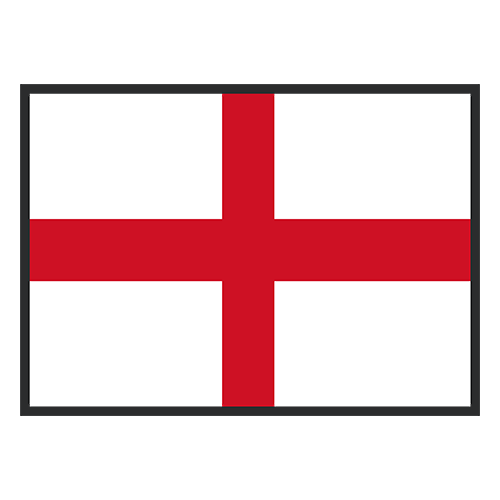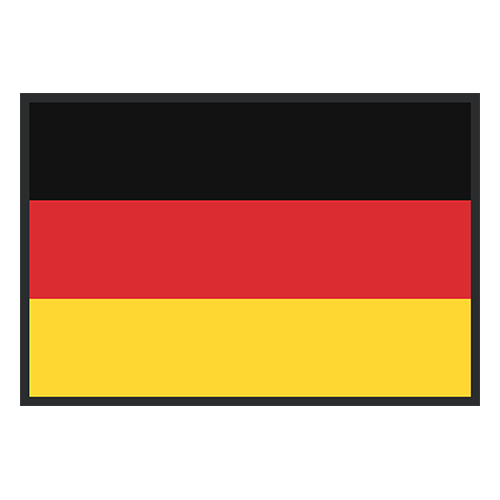Two weeks into the 2022 European Championship, we’re still waiting for the first big name to fall. We won’t have to wait much longer. Six teams entered the 16-team tournament with title odds significantly better than the rest of the field, and all six advanced as expected to the knockout rounds. With the quarterfinals beginning on Wednesday, four of those powers will face one another in the coming days.
Quarterfinals schedule (“powers” in bold, all matches at 3 p.m. ET on ESPN2)
June 20: England vs. Spain
June 21: Germany vs. Austria
June 22: Sweden vs. Belgium
June 23: France vs. Netherlands
(The winner of England-Spain and Sweden-Belgium will face each other in July 26’s semifinal, and the winners of Germany-Austria and France-Netherlands will play on July 27.)
As we approach what should be an utterly spectacular set of knockout matchups, let’s look back at what we learned, and what changed, during the group stage.
Who’s the favorite now?
Before the tournament, I broke things down into tiers of favorites based on the pre-tournament betting odds. Those odds have shifted in the past two weeks, of course, so let’s check back in with the betting markets. (All odds per Caesars Sportsbook/William Hill.)
– Euro 2022: Daily guide to coverage, fixtures, more
– Every Euros game LIVE on ESPN: Navigate the schedule
As with before, we basically still have about four tiers of favorites as we head into the knockout rounds.
Tier 1
Tier 2
-
Sweden (+550, or 13-2)
-
Spain (+600, or 7-1)
Tier 3
Tier 4
Sparks of dominance have moved both France and Germany up to Tier 1 alongside an England team that has been utterly rampant. Meanwhile, Spain’s odds fell the moment star Alexia Putellas tore her ACL in a pre-tournament training session. Spain still advanced to the knockout rounds with minimal drama, losing to Germany — in a match they statistically controlled statistically in about every category except actual shot quality — but fending off Denmark to finish second in Group B. But now they face England in the quarterfinals, a particularly tall task.
One other potential favorite has seen its odds fall a bit? The Netherlands. The defending Euro champions have been as volatile as expected — all the offensive potential in the world mixed with potential defensive glitches at every turn — and goalkeeper Sari van Veenendaal‘s shoulder injury certainly hasn’t helped their odds.
The veteran and former Arsenal keeper left the first game of the tournament after just 22 minutes, and the Dutch have had to instead lean on 22-year-old Daphne van Domselaar. She allowed a Sweden goal within about 10 minutes of coming on, but she’s otherwise done all right; per StatsPerform, the shots opponents have put on her goal have been worth 4.5 expected goals (xG), post-shot, and she’s only allowed four goals, which means she’s been a net positive. But defensive glitches did appear against both Sweden and Portugal, and a second-place finish in Group C means the Netherlands might have to beat all three Tier 1 favorites to defend its crown.
Let’s talk a bit more about each of those favorites.
 Is it still ‘Coming Home’ for England?
Is it still ‘Coming Home’ for England?
When Germany famously beat Brazil 7-1 in the 2014 men’s World Cup, it was a classic case of torrid shooting. For the game, the Germans attempted only 14 shots worth 3.3 xG, but they simply couldn’t miss, especially during their unreal stretch of four goals in seven minutes in the first half. (Those four goals came on shots worth 1.3 xG.) It was a dominant performance, but as with other gaudy score lines, it wasn’t necessarily sustainable from a statistical standpoint.
What’s scariest about England’s performance thus far in this tournament is that the stats mostly back it up. Sarina Wiegman’s Lionesses walloped Austria, Norway and Northern Ireland by a combined 14-0 in group play; their xG in these matches: 12.1 for and 0.8 against. In their rampant 8-0 win over Norway, they attempted shots worth 6.9 goals to Norway’s 0.2.
Norway, of course, were the most disappointing team in the field, and for perhaps the second straight Euros. Star Ada Hegerberg had rejoined the squad, and they came in with 14-1 title odds, but they could find no adjustments to make while England were picking them apart. Against Austria they trailed 1-0 for nearly two thirds of the make-or-break match and could only put together eight shot attempts against a packed-in defense and bowed out of the tournament.
Still, the stats reinforce England’s dominance. They have controlled the ball (in three matches, their possession rates were 59%, then 64%, then 77%), they have counter-pressed well on the rare lost possession and they have created a steady stream of high-quality shots: They attempted 19 shots worth 0.2 xG or greater, while the rest of Group A combined for six such shots in the entire group stage.
Better yet, they’ve been able to rotate players. Only three played in all 270 group-stage minutes — goalkeeper Mary Earps, centre-back Leah Williamson and defensive midfielder Keira Walsh — while six attackers played between 104 and 244. Beth Mead has been particularly brilliant (five goals and two assists among 10 chances created in 244 minutes), but so many pieces from maybe the deepest roster in the tournament found a rhythm. The work has just begun, and they still might have to beat Spain, Sweden and France or Germany to win the title, but it’s almost impossible to look better than England did in the group stage.
 So … Germany’s back, eh?
So … Germany’s back, eh?
From a 50,000-foot view, the fact that the eight-time Euro champions are among the tournament’s favorites makes perfect sense. Germany won this event eight of nine times between 1989 and 2013 and won the World Cup twice in that span as well. More recently, they have won Gold at the Olympics (2016) and reached the World Cup semis (2015). Of course they’re favorites, right?
There’s no question that their level had suffered a drop-off in recent tournaments, though. They lost by 2-1 scores in the quarterfinals of both Euro 2017 (to Denmark) and the 2019 World Cup (to Sweden), and the World Cup loss prevented them from qualifying for the 2020 Olympics. And in six pre-Euro matches in 2022, they had drawn with Spain and lost to Canada, England and, more damning, Serbia. That’s enough to bring you down a few pegs … and outscoring three opponents by a combined 9-0 in what was the Euros’ most challenging group is enough to bring you right back up.
Perhaps the most intriguing part of Germany’s intriguing performance is how democratic it has been. With star Lea Schuller missing two matches due to a positive COVID-19 test, oft-injured captain Alexandra Popp got an extended run of action and scored three goals, one in each match. In all, however, the team’s nine goals and six assists have come from 12 different players. Klara Buhl, the team’s best distributor, has created 10 chances but hasn’t assisted on a goal yet (she did score the opener against Spain), and club stars Tabea Wassmuth (Wolfsburg) and Laura Freigang (Eintracht Frankfurt) have yet to contribute anything in 68 combined minutes. And yet the Germans still advanced easily.
Of course, simply making the quarterfinals only means so much. Germany are supposed to beat the Denmarks and Finlands of the world, even if the way they did so — they outshot those two teams by a 55-7 margin and outscored them 7-0 — was particularly dominant. In their only match against a fellow contender, it was difficult to reach any particular conclusions.
That they beat Spain, 2-0, is impressive in itself. Spain are massively talented and ball-dominant even without Putellas, and any sort of win against them is a good one (especially without Schuller). But the game state was defined significantly by Buhl’s third-minute goal, which came off of a misplayed pass by Spanish keeper Sandra Panos. Germany therefore led for 95% of the match and were able to play things rather safe and maintain their defensive structure. Despite that, Spain were still able to create big scoring chances in the 10th (a particularly rueful missed opportunity for Lucia Garcia), 56th and 71st minutes.
Germany made the most of their chances and won, but it wasn’t necessarily a sustainable formula. That they face Austria in the quarterfinals — one of the two teams with odds and rankings significantly lower than those of the power six — means they would potentially only have to beat two of the major favorites to win the tournament instead of three. That might be the biggest reason for them to be considered basically co-favorites.
0:52
Emma Hayes and Danielle Slaton react to Sweden and the Netherlands reaching the Euro 22 quarterfinals.
 Upside and warning signs for France
Upside and warning signs for France
If France’s biggest opponents heading into this tournament were themselves, Les Bleues have kept said opponents neutralized thus far. They stomped Italy 5-1 in their tournament opener, then dominated Belgium far more than the 2-1 final score suggested. (France: 27 shots worth 4.2 xG; Belgium: two shots worth 0.2.) Having already clinched advancement, they scored in the first minute against Iceland and cruised from there, eventually conceding a meaningless tying goal late in stoppage time.
They advanced comfortably, albeit with a couple of warning signs. Finishing has been a bit of an issue thus far — Grace Geyoro has three goals (all against Italy) from shots worth 2.2 xG, but the rest of the team has just five goals from shots worth 7.7 xG. Meanwhile, opponents have generated 3.4 xG (and three goals) from 24 shots; among the eight quarterfinalists, only Netherlands and Belgium have allowed more, although a good portion of that figure was generated by Iceland.
This hints at what could be an absolute track meet against Netherlands in the quarterfinals, but it’s also a reminder that France’s group was pretty deep. All three opponents are ranked in the teens of the latest FIFA women’s rankings, while each of the other three groups had at least one team that was a bit of dead weight. In England’s group, Finland and Northern Ireland both qualified as such. Avoiding drama and getting to rest players — only two played all 270 minutes (goalkeeper Pauline Peyraud-Magnin and defender and captain Wendie Renard) — was in no way a given.
The quarterfinals carry heavy significance. The French have suffered gutting losses in this round in their past five major tournaments — the 2013 Euros (lost to Denmark on penalties), 2015 World Cup (Germany on penalties), 2016 Olympics (1-0 to Canada), 2017 Euros (1-0 to England) and 2019 World Cup (2-1 to USA). Surely it couldn’t happen again, right?
The value of a good keeper
The standard of goalkeeping in high-level women’s soccer is rising quickly. According to the Telegraph, a recent study by StatsPerform found that goalkeeping errors that led to goals have fallen by 73% in the past three seasons in England’s Women’s Super League and were actually lower than in the Premier League in 2021-22. It was supposed to be disastrous that Van Veenendaal got hurt and the Dutch had to go to their backup keeper, but Van Domselaar has very much held her own.
That said, we still saw a pretty dramatic range of quality from the keepers of the 16 teams in this tournament. Panos’ error completely defined Spain’s loss to Germany, and goalkeeping absolutely made the difference in the race for second place in Group D — Belgium had it, and Italy in particular did not.
StatsPerform’s goals-prevented measure is a useful tool for evaluating goalkeepers. It compares a keeper’s or a team’s goals allowed to the post-shot xG value of opponents’ shots on target (xGOT) to create a “what you gave up vs. what you should have” sort of measure. Using goals prevented, the incredible play of Belgium’s Nicky Evrard stands out quickly.
Goals prevented in the group stage (quarterfinalists in bold)
-
1. Belgium +5.5 (8.5 xGOT conceded, 3 goals)
-
2. Austria +2.1 (3.1 xGOT, 1 goal)
-
3. England +1.4 (1.4 xGOT, 0 goals)
-
4. Finland +1.1 (9.1 xGOT, 8 goals)
-
5. Germany +1.1 (1.1 xGOT, 0 goals)
-
6. Netherlands +0.6 (4.6 xGOT, 4 goals)
-
7. Iceland +0.6 (3.6 xGOT, 3 goals)
-
8. France +0.2 (3.2 xGOT, 3 goals)
-
9. Switzerland -0.2 (6.8 xGOT, 7 goals*)
-
10. Sweden -0.2 (1.8 xGOT, 2 goals)
-
11. Norway -0.3 (9.7 xGOT, 10 goals)
-
12. Denmark -0.4 (4.6 xGOT, 5 goals)
-
13. Spain -0.4 (2.6 xGOT, 3 goals)
-
14. Portugal -2.0 (7.0 xGOT, 9 goals*)
-
15. Italy -2.9 (4.1 xGOT, 7 goals)
-
16. Northern Ireland -4.2 (5.8 xGOT, 11 goals*)
* Each of these teams also allowed an own goal, which didn’t count here.
In what was supposed to be a tight battle for second place in Group D, Belgium got nearly flawless goalkeeping from Evrard, a 27-year-old who plays for OH Leuven in her home country, while Iceland’s goalkeeping was close to expectation and Italy’s was poor. Belgium advanced. Austria, with standout play from Arsenal’s Manuela Zinsberger, did as well.
Obviously Belgium and Austria have tall tasks ahead of them in facing Sweden and Germany, respectively, in the quarterfinals, but riding a red-hot, in-form goalkeeper has been one of the most tried and true ways of pulling a knockout-round upset since the sport was invented. These two teams’ odds of winning the tournament are the lowest remaining, but that doesn’t mean they’re done just yet.
